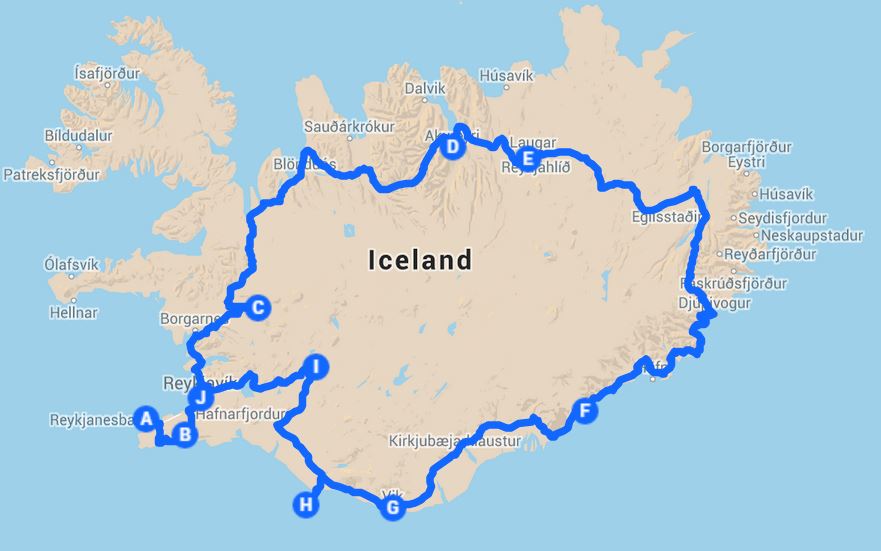The South
JÖKULSÁRLÓN A stunning glacial lagoon filled with icebergs that have calved off the glacier Breiðamerkurjökull and are heading out to sea. It is abundant with fish that have drifted in from the ocean, and you may catch a glimpse of seals swimming around the lagoon looking to reap the bounty.
SKAFTAFELL NATIONAL PARK Part of the larger Vatnajökull National Park, Skaftafell is a masterpiece of seemingly impossible contrasts of nature. The landscape in the park has considerable variety and has been formed over thousands of years by the influences of ice, fire, and water. The waterfall Svartifoss is one of Skaftafell's best known attractions, mainly for the towering black basalt columns that flank it.
KIRKJUBÆJARKLAUSTUR Home to Kirkjugólf (“church floor”). A church was, in fact, never situated here, but this natural attraction was formed when lava cooled quickly and contracted, forming hexagonal pillars that look like tiles. Nearby is Fjaðrárgljúfur, a canyon that, while not particularly impressive in size, is absolutely breathtaking. The canyon is cut from the volcanic rock palagonite and the walls are blanketed in a vibrant green moss. Also in the vicinity is the volcanic fissure Lakagígar. This system erupted in the late 18th century and wreaked havoc around the globe – 6 million people died in the aftermath, making it the deadliest eruption in historical times.
VÍK The southernmost village in Iceland, renowned for the breathtaking black beaches of Reynisfjara and the basalt columns of Reynisfjall that appear like a stairway to the sky. Just offshore, three basalt sea stacks known collectively as Reynisdrangar rise up against the unrelenting waves of the North Atlantic. According to local folklore, these formations are not rocks at all, but trolls that were turned to stone at sunrise. And to the west lies Dýrholaey, a promontory formed by a submarine volanic eruption and known for its large, distinctive archway.
SELJALANDSFOSS One of the most picturesque waterfalls in all of Iceland. Here, the river Seljalandsá drops 200 feet over the cliffs of what used to be the island‘s coastline. If favorable conditions allow (and if you don‘t mind getting a bit wet!), it is possible to walk behind the waterfall.
EYJAFJALLAJÖKULL The Eyjafjallajökull Visitor Centre lies right at the foot of the now world-famous volcano. The center is operated by the family of the Þorvaldseyri farmstead that has thrived in the looming shadow of the glacier and active volcano for generations. A short film shown at the center spotlights the remarkable challenges faced by the family in the wake of the historic eruption in 2010.
HVERAGERÐI A town that plays a central role in Icelandic horticulture thanks to the abundance of geothermal activity in the area that is harnessed for use in greenhouses. Frequent (but usually minor) earthquakes are the norm here.
VESTMANNAEYJAR An archipelago formed by submarine volcanic eruptions and located a short ferry ride from the southern mainland. Heimaey is the largest and most populated of the islands and a historical eruption of Eldfell in 1973 nearly rendered it inhabitable. Although the eruption came without warning, the 5300 residents of the island were evacuated within hours, and seawater was used to slow the lava flow that was threatening to destroy the harbor – the island’s main source of income and livelihood.

























